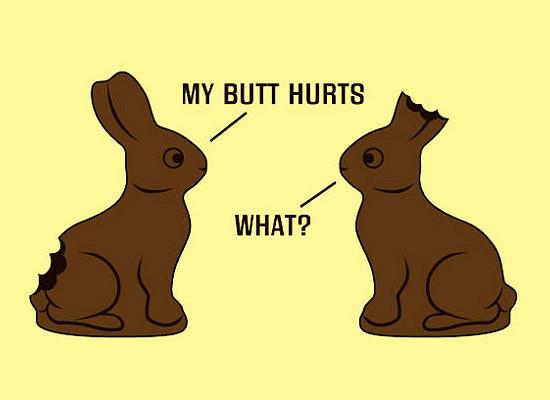It is Easter, and all of our thoughts turn to candy as we spend $2.1 billion, roughly $28 per person. In keeping with our mandate to promote science and health, I thought I would share the typical numbers found in the lay press in a more ‘scientific’ format.
Introduction
While our minds “know” that candy is not especially nutritious, we nonetheless use our wallets to purchase plenty of it for Easter. A meta-analysis of various online sources was used to quantify this behavior.
Methods
From a survey data of a sampling of individuals queried on their confectionary purchases, we can provide the following information. (Please note that calories were taken from a meta-analysis of food labels [1] and these values were used to extrapolate caloric intake using the following formulae.)
Calories purchased = Total pounds of candy times % of candy purchased * ((calories/ounce)*16)
Calories per person = Total calories purchased/Current U.S. Population
Cost per calorie = Average Individual Calories purchased/Average Individual expenditure
And here are our findings:
|
Product |
Percentage of purchases |
Calories per ounce [2] |
Pounds purchased |
Calories per person [3] |
|
Bunnies |
||||
|
Hershey's |
9% |
141.7 |
10800000 |
75.2 |
|
Lindt includes carrots and rabbits |
3% |
125.8 |
3600000 |
22.2 |
|
Russel Stover |
5% |
160 |
6000000 |
47.2 |
|
M&M |
11% |
141.2 |
13200000 |
91.6 |
|
Chocolate nests |
2% |
140 |
2400000 |
16.5 |
|
Sweetart Chicks |
5% |
120 |
6000000 |
35.4 |
|
jelly beans |
10% |
105 |
12000000 |
61.9 |
|
Peeps |
8% |
106.7 |
9600000 |
50.3 |
|
Eggs |
||||
|
Snickers |
8% |
145.5 |
9600000 |
68.6 |
|
Cadbury Crème |
8% |
208.4 |
9600000 |
98.3 |
|
Cadbury Mini |
8% |
172.8 |
9600000 |
81.5 |
|
Reese’s Peanut Butter |
14% |
150 |
16800000 |
123.8 |
|
Butterfinger |
6% |
42.9 |
7200000 |
15.2 |
Discussion
We found that a $28 purchase provides us with roughly 787 calories or $0.28 per calorie. Using shopping data and based on prices for both apples and steak; apples are approximately $0.02 per calorie and steak $.01 per calorie.
Conclusion: Based on our calculations it is clear that one can provide more calories to Easter baskets by filling them with steaks or apples, not candy. While further research is needed we believe these facts should inform the public and be used as evidence in food policy.
Supplemental Information:
- 89% of Americans feel that chocolate bunnies are best-eaten ears first, while a dissident minority (6% p <.05) believe that feet first consumption is more appropriate. An additional 5% began by eating the tail. These are almost certainly deranged individuals.
- As many as 5,000,000 Peeps are prepared daily in preparation for the Peep genocide of Easter eating. This suggests that many of the Peeps eaten have a longer shelf life than that of the timeless Twinkie - 45 days. Other reviews have concluded that Peeps will not only survive the inevitable post-apocalyptic famine but may even provide calories to help us survive it [4].
- Jelly beans were ‘invented’ during the Civil War by William Schrafft, who suggested sending them to the troops. It is unclear whether they were offered in blue, grey, or both. 70% of respondents prefer to eat them one at a time, while 23% eat several at once, thus raising concerns about a choking hazard and demands for regulatory oversight by US Right To Know, perhaps the group's most urgent mission ever. Most of the children at risk for this behavior are boys ages 6 to 11.
- Easter has been the holiday associated with the highest candy purchases, eclipsing Halloween by a small bit (p-value not calculated)
- While 88% of parents create Easter baskets for their children, 90% have the false hope that they will receive their own treat from the Easter bunny (Spoiler alert: the bunny is not real, even the Cadbury bunny). 80% of parents experiencing this disappointment will take candy from their children's basket. No calls to Child Protective Services have been recorded at this time.
- For consumers who are concerned about the effects of Easter upon regional economies, the Midwest is the most engaged in candy purchases, and the West Coast the least. Moreover, further analysis shows that the growing discord between rural and urban areas is also seen in our candy purchasers, with more engagement in rural areas.
- Prior studies indicated that the brick and mortar stores, for example, Walmart and Target were the primary sites for Easter purchases at roughly 40% each. Amazon, in its effort to control all purchases on earth, is said to have a prototype edible drone, which can deliver itself only to meet its own demise shortly thereafter.
- Non-edible Easter Basket components include crayons (perhaps edible to the curious), stuffed animals, books, and markers.
The author discloses no conflicts of interest
[1] I actually just searched on Google for ingredients, Fooled you.
[2] In each case this represents a serving size although for whom is unclear.
[3] Based on an estimated US population of 325.7 million and assuming all are eating candy. More accurate estimates should exclude patients with diabetes or those who are following anti-carbohydrate diet plans who are not cheating.
[4] In reviewing these calculations we believe that the 5 million figure is an overestimate and that the real number is probably about 1.5 million. The other possibility is that plant workers at Peeps are eating a lot of the product before it is packaged.




